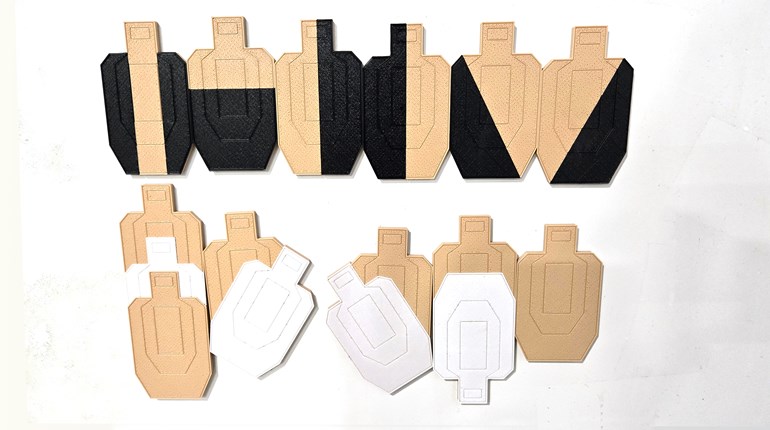
NRA Women already know the cardinal rules of safe gun handling and know that the rules have built-in redundancy to allow for multiple layers of protection from accidents and negligence. Depending on who you talk to, there are either three or four cardinal rules, but I like the four taught by Gunsite Academy:
- All guns are always loaded.
- Never let your muzzle cover anything you’re not willing to destroy.
- Keep your finger off the trigger until your sights are on the target.
- Be sure of your target and what’s beyond it.
Now, there are going to be times when you’ll need or want to pull the trigger on an unloaded firearm inside your home—for disassembly of some models or, primarily, for dry-fire practice. How do you do this safely while obeying the four rules? First, you verify visually and physically that the gun is indeed unloaded. Second, you utilize a safe backstop so you won’t be violating rules No. 1 and 2.
For details on what constitutes a safe backstop, read up on the difference between cover and concealment, focusing on cover (because it stops bullets). You don’t need full cover in your house for dry-fire or firearms disassembly, because you aren’t hiding from gunfire, but you do need something to point the gun at that will stop a bullet in case the worst happens.
First, consider your safe directions, specifically the floor if you are on the bottom level of the building—worst-case scenario, you might send a bullet through the subfloor and into some plumbing. This isn’t an option if your gun-cleaning room is on the second floor of your home or if you live in an apartment with renters beneath you, of course, and it’s really only helpful for disassembly trigger-pulling, because dry-firing at the floor is not the most comfortable angle. For those situations, you need a backstop.
For simple disassembly, you can use a five-gallon bucket of sand or a bullet trap, as many gunsmiths do. Just point the unloaded firearm into the bucket and pull the trigger as required to disassemble the gun.
For dry-fire practice, you want something at about eye level for comfort. Understand that plywood, 2x4s and drywall do not stop bullets, which means that normal interior walls in your home (and even exterior walls if they’re not bricked on the outside) are not sufficient backstops. If your basement is underground, those exterior walls will work, because the dirt on the outside of the wall will stop a bullet. If you have a cinder-block wall, that will work, at least for handgun projectiles, which is really all we’re talking about here, and a solid brick or stone wall or fireplace will work as well (emphasis on solid).
If those aren’t options in your home, you’ll have to get creative. Can you build a stack of cinder blocks in the basement? Can you shoot at the side (not the front or back) of a crowded bookshelf so that the many, many pages would stop a bullet? A filing cabinet or a box of printer paper, arranged so a bullet would travel through each sheet of paper and not between sheets, would do the same thing. Can you hide a large steel target, the kind used for competition or long-range shooting, behind a painting in your bedroom? Can you hang a bullet-proof vest in the back of your closet? Can you set that five-gallon bucket of sand up on a high table so it’s at a comfortable dry-fire height? Can you aim at a paper target on your full water heater tank? The water in it would stop a bullet, although it doesn’t make for a very wide target. Your gun safe—I mean a real, heavy-duty gun safe, not just a metal box—is a pretty reliable safe backstop as well.
Let me tell you what you can’t use as a safe backstop for dry fire:
—Interior walls and exterior walls that aren’t solid brick
—Interior and exterior doors, unless they are solid steel
—One, two, three or even four layers of cheap wood (2x4, plywood, wood paneling, etc.)
—A fridge, washing machine or other appliance
—The television
—The bathroom mirror (yeah, I know, it looks cool)
—A mattress, couch, table or pretty much any other furniture
Bottom line: A safe backstop for dry-fire practice needs to be able to stop a bullet in case everything goes wrong and the worst happens. There are surprisingly few objects in your home that serve as a safe backstop, but you can improvise one with a little creativity and dry-fire to your heart’s content with peace of mind.















































